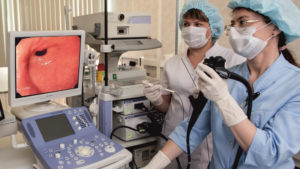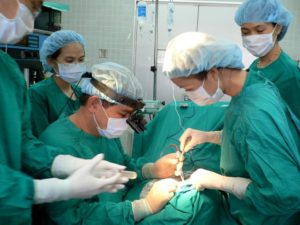被陽痿困擾的男性朋友也日益增加。說到陽痿可能很多人聽過,但是陽痿的症狀具體有哪些或許就不是人人都了解。陽痿的症狀除了勃起障礙以外還有哪些表現呢?

Types of Surgery performed by Dr. K.S. Sethna

Cytoreductive Surgery with HIPEC
In cytoreductive surgery and hyperthermic intraperitoneal chemotherapy (HIPEC), visible cancerous tumors are first removed from the abdominal cavity surgically. The cavity is then bathed with hot chemotherapy — heated to 42 degrees Celsius — to kill any microscopic cancer cells that remain. Hyperthermia augments the cytotoxicity of chemotherapy, and intraperitoneal installation allows for delivery of much higher doses locally than are possible systemically, while minimizing toxicity.

Hipatobilliary & Pancreatic Tumour
Hepatobiliary and pancreatic cancers have had a high mortality rate and have been poorly responsive to therapy. Because of a growing number of treatment options, patients are now living longer. For hepatocellular carcinoma, a broad number of treatment options are available, including surgery, ablation, embolization, systemic therapy, and liver transplantation. Treatment options for cholangiocarcinoma include surgery, systemic therapy, and liver transplantation. For pancreatic cancer, surgery, radiation, and systemic therapy all have potential roles. This review provides an updated summary of diagnosis and assessment together with treatment options for this group of cancers.

Upper & Lower GI Surgery
The upper gastrointestinal (GI) includes the oesophagus (food pipe), stomach and the duodenum (the first part of the small intestine). The upper gastrointestinal tract is prone to several conditions that may need surgical treatment.
Upper GI surgery includes:
Gastrectomy is surgery to treat stomach tumours. This involves the partial or full removal of the stomach and nearby lymph nodes.
Oesophagectomy is surgery to treat oesophageal tumours, and it involves removing all or part of the oesophagus.
Minimally invasive laparoscopic (keyhole) surgery can be used for resection (removal) of stomach and oesophageal tumours.

Gynaec Oncology
Treatment for gynaecological cancers depends on which organ it has affected, as well as, the stage and type of the disease, the severity of symptoms and the woman’s general health. Treatment often involves surgery to remove as much of the tumour as possible, and to determine its stage (how far the cancer may have spread). Once the stage of cancer has been determined, one of the following methods are used to fight the cancerous cells:
Surgery: In this process, the doctors remove cancer tissue in an operation.
Chemotherapy: Chemotherapy involves the use of drugs to stop or slow the growth of cancer cells. Chemotherapy may cause side effects, but these often get better or go away when treatment is over. Chemotherapy drugs may be given in several forms, including pills or through an IV (intravenous) injection.
Radiation: Radiation uses high-energy rays (similar to X-rays) to try to kill the cancer cells and stop them from spreading. The rays are aimed at the part of the body where the cancer is.

Palliative Care
Cancer and its treatment can cause physical symptoms and side effects. They can also cause emotional, social, and financial effects. Treating these effects is called palliative care or supportive care. Palliative care is an important part of care that is included along with treatments to slow, stop, or cure the cancer. Research shows that palliative care can improve the quality of your life and help you feel more satisfied with the treatment you receive. You may start palliative care soon after learning you have cancer and continue to receive this type of care through treatment and recovery. For example, cancer survivors who have ongoing or new symptoms or side effects after treatment is completed also may receive palliative care.